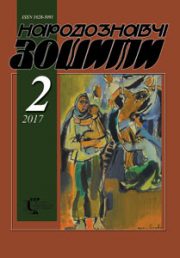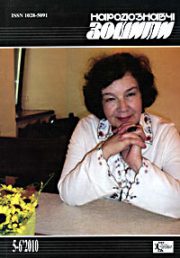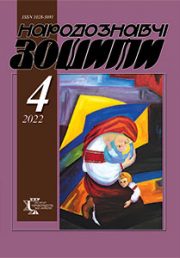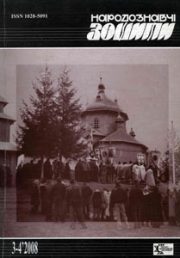The Ethnology Notebooks. 2017, 6 (138), 1419—1424
UDK 93″19″(477.83)
DOI https://doi.org/10.15407/nz2017.06.1419
Received 19.10.2017
Berest Ihor Romanovich, Ph.D in History, associate professor
at the Department of Information, Book and Library Affairs
of the Ukrainian Academy of Printing
Pidholosko Str., 19, Lviv, 79020, Ukraine
Contacts: Tel. (032) 2422363 ; e-mail: kudid.uad@gmail.com
Abstract. The author analyzes the legal framework of the Austrian Empire, whose liberalization has contributed to the emergence and active participation of trade unions. The article uses material that proves that trade unions have become a new social phenomenon, which was called to stand up for the economic interests of the working masses in the new political and socioeconomic conditions of the state’s development. The author emphasizes that during the second half of the ХІХ and early ХХ centuries the state authorities failed to create separate trade union legislation and it was forced to form and evolve in the depths of various legislative acts.
Keywords: revolution, trade union, law, constitution, workers.
REFERENCES
Berest, R. (1995). Narysy istorii profspilkovoho rukhu v Zakhidnij Ukraini (1817—1939 rr.). Drohobych : Vidrodzhennia. [in Ukraine]
Hrytsak, Ya. (1987). Pershe robitnyche. Do 170-richchia stvorennia u L’vovi tovarystva drukariv. Lenins’ka molod’,143. [in Ukraine]
Zakon ob obschykh delakh vsekh zemel’ Avstryjskoj monarkhii i o poriadke upravlenyia imy, 21 dekabria 1867 h. (1989). In P.I. Ostrykov & P.P. Vandel’ (Eds.), Sbornyk dokumentov po istorii novoho vremeni: Ekonomicheskoe razvitije i vnutrenniaia polityka stran Evropy i Ameryky 1870—1914 (pp. 241—245). Moskva : Vysshaia shkola. [in Russian]
Zashkil’niak, L. (Ed.). (2001). Istoriia Tsentral’noSkhidnoi Jevropy. L’viv : L’vivs’kyj natsional’nyj universytet im. I. Franka. [in Ukraine]
Konopka, M. (2010). Biblioteky l’vivs’kykh tovarystv remisnykiv periodu avtonomii Halychyny ta ikh funktsii. Visnyk L’vivs’koho universytetu. Seriia knyhoznavstvo, bibliotekoznavstvo ta informatsijni tekhnolohii, 5,106—115. [in Ukraine]
Lazarovych, M. (2007). Iliustrovana istoriia Ukrainy. Ternopil’ : Dzhura. [in Ukraine]
Opovistka ministra torhovli za porozuminiem z ministrom vnutrishnykh sprav z 16. serpnia 1907 v spravi osnovy promyslovoho ustava. (1907). Vistnyk zakoniv derzhavnykh dlia korolivstv i kraiv, zastuplenykh v radi derzhavnij (Vol. 199, pp. 757—822). Viden’ : Iz tsisarsko-korolivskoi nadvornoi ta derzhavnoi pechatni. [in Ukraine]
Roman, N.M. (2010). Konstytuiuvannia AvstroUhorschyny 1867 r.: istorykopravovi aspekty. Forum prava,3, 380—383. [in Ukraine]
Turij, O. (2001). Moskvofil’stvo. In I. Pidkova & R. Shust (Eds.), Dovidnyk z istorii Ukrainy (pp. 485—487). Kyiv : Heneza. [in Ukraine]
Honcharenko, V.D. (Ed.). (2000). Khrestomatiia z istorii derzhavy i prava Ukrainy (Vol. 1). Kyiv : Vydavnychyj Dim «In Yure». [in Ukraine]
Tsisarskij patent z dnia 26. Lystopada 1852, dijatel’nyj dlia tsiloho ob’iemu Derzhavy iziatno Vojskovoho Pohranychia, kotrym rozporiadzhaiut’sia novii opredileniia vzghliadom stovaryshenij (zakon o stovarysheniiakh). (1852). In Obschij zakonov derzhavnykh i Pravytel’stva vistnyk dlia Tsisarstva Austriy (pp. 1109—1116). Viden’ : Z ts. k. nadvornoi i statskoi tyskarni.
Przepisy gorniczo-policyjne dla wiercen na terenach oleju skalnego (ropy) w Galicyi z dnia 9. Lipca 1898. (1898). Dziennik ustaw і rozporzadzen krajowych dla Krolestwa Galicyi i Lodomeryi wraz z Wielkiem Ksiestwem Krakowskiem, 87, 257—258. [in Polish]







